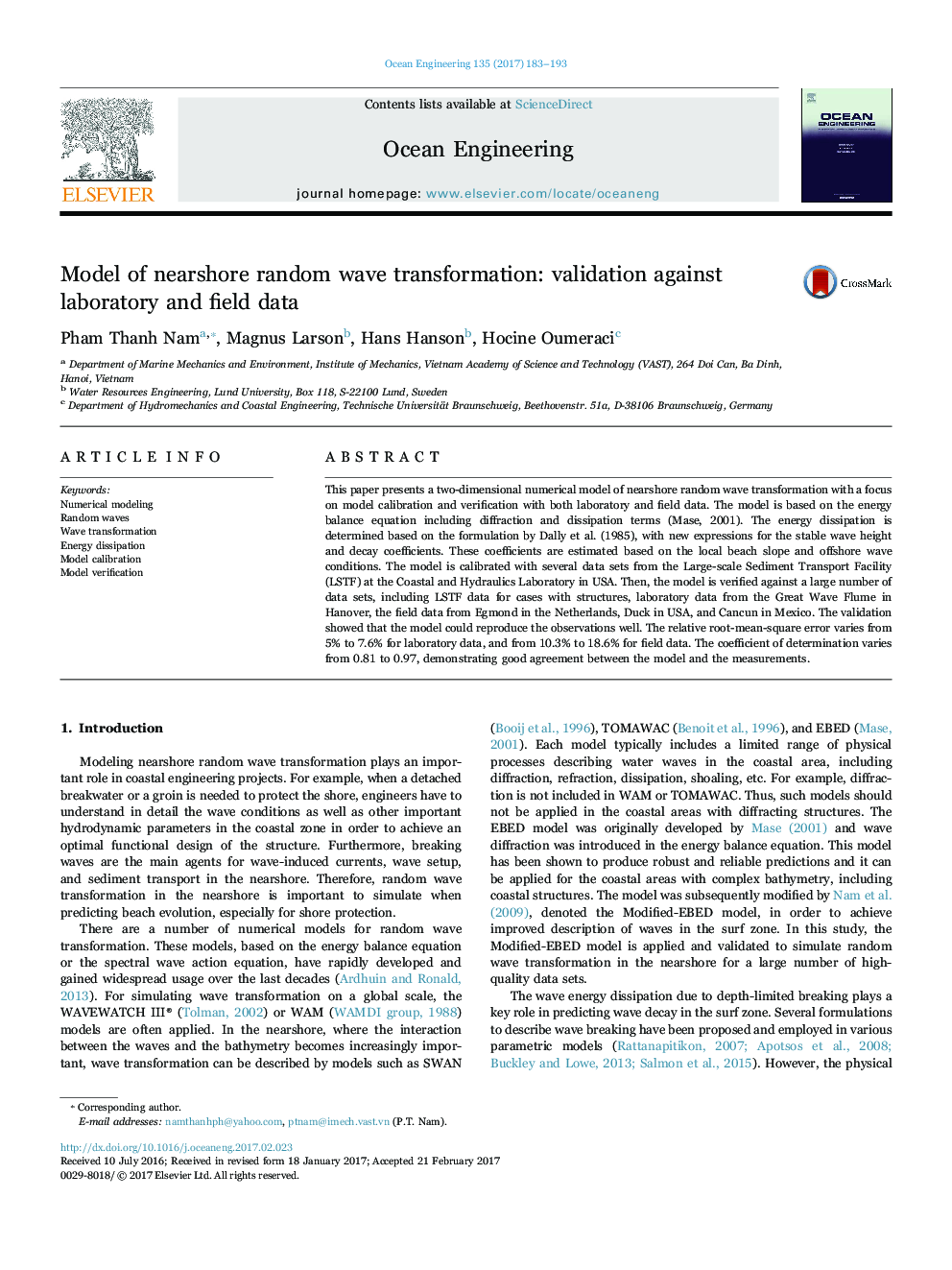| Article ID | Journal | Published Year | Pages | File Type |
|---|---|---|---|---|
| 5474566 | Ocean Engineering | 2017 | 11 Pages |
Abstract
This paper presents a two-dimensional numerical model of nearshore random wave transformation with a focus on model calibration and verification with both laboratory and field data. The model is based on the energy balance equation including diffraction and dissipation terms (Mase, 2001). The energy dissipation is determined based on the formulation by Dally et al. (1985), with new expressions for the stable wave height and decay coefficients. These coefficients are estimated based on the local beach slope and offshore wave conditions. The model is calibrated with several data sets from the Large-scale Sediment Transport Facility (LSTF) at the Coastal and Hydraulics Laboratory in USA. Then, the model is verified against a large number of data sets, including LSTF data for cases with structures, laboratory data from the Great Wave Flume in Hanover, the field data from Egmond in the Netherlands, Duck in USA, and Cancun in Mexico. The validation showed that the model could reproduce the observations well. The relative root-mean-square error varies from 5% to 7.6% for laboratory data, and from 10.3% to 18.6% for field data. The coefficient of determination varies from 0.81 to 0.97, demonstrating good agreement between the model and the measurements.
Keywords
Related Topics
Physical Sciences and Engineering
Engineering
Ocean Engineering
Authors
Pham Thanh Nam, Magnus Larson, Hans Hanson, Hocine Oumeraci,
